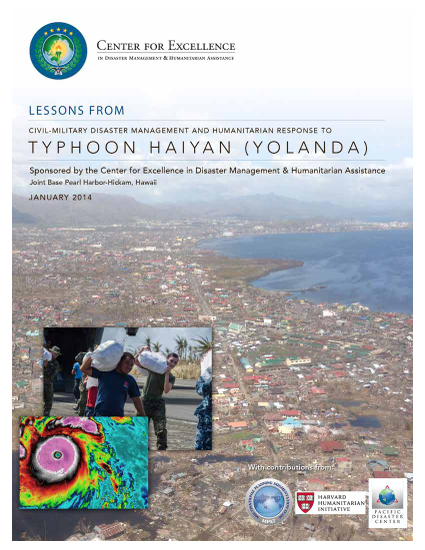
The rapid response efforts with regard to Super Typhoon Haiyan (Yolanda) have been widely acclaimed and deemed successful by many observers and aid work- ers. Many humanitarian and military leaders noted that civil-military coordination during the Haiyan response was some of the best they had seen. Yet, the effective- ness of the coordination varied by location and method, and much of the credit given to coordination was likely due more to the fact that there was reduced “competition” between the major responders because the actors restricted their actions to their appropriate duties during the response.
Several observations of previous complex disasters resurfaced: during the initial days of response, the lack of situational awareness and delayed implementation of standard operating procedures and pre-planned responses did not support the optimal use of resources, particularly in terms of logistics; communication between the military and the humanitarian community remained a challenge; and the use of liaison officers to address some of these gaps was not widely adopted or fully maximized with the exception of some foreign military efforts in the province of Capiz.